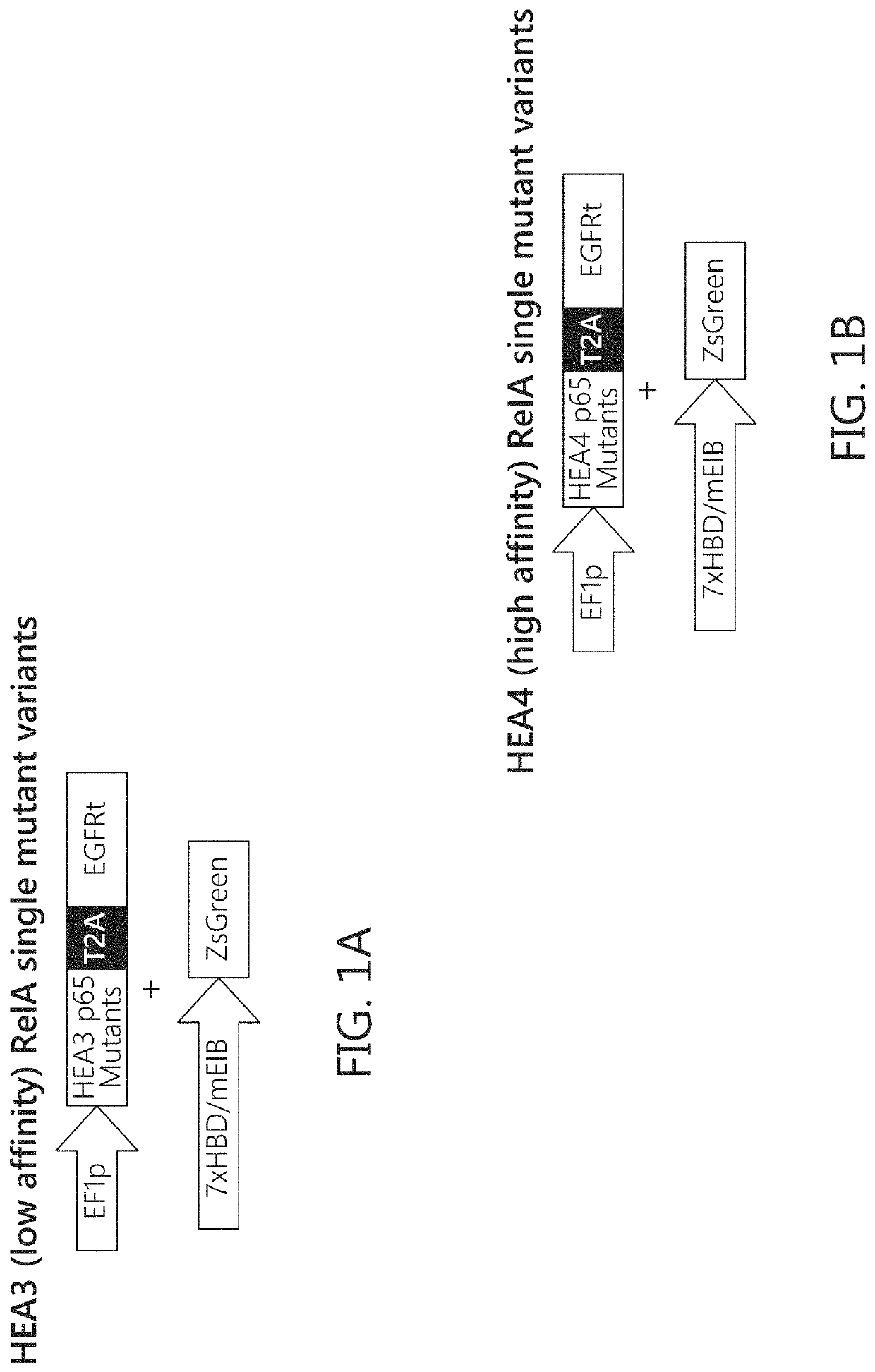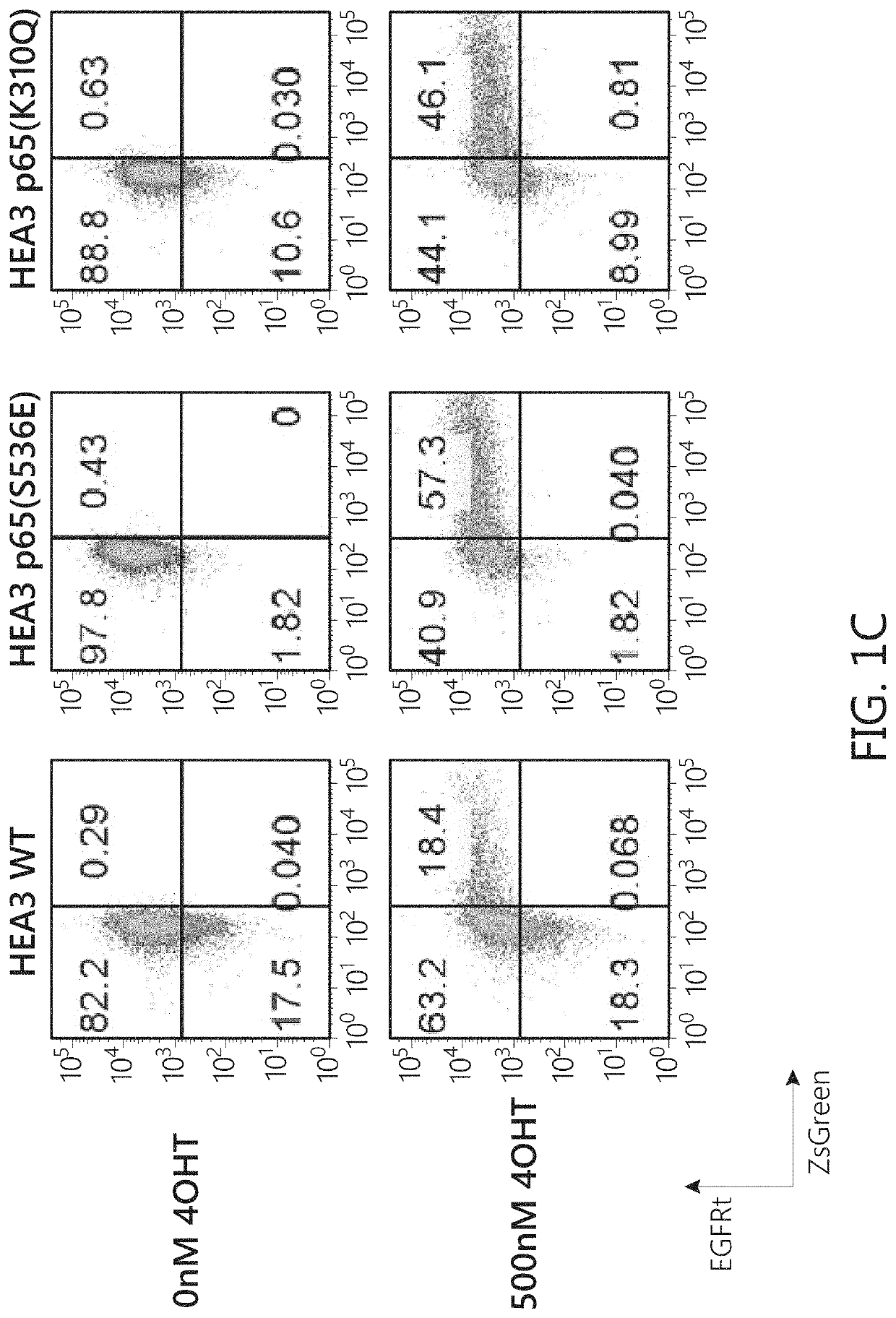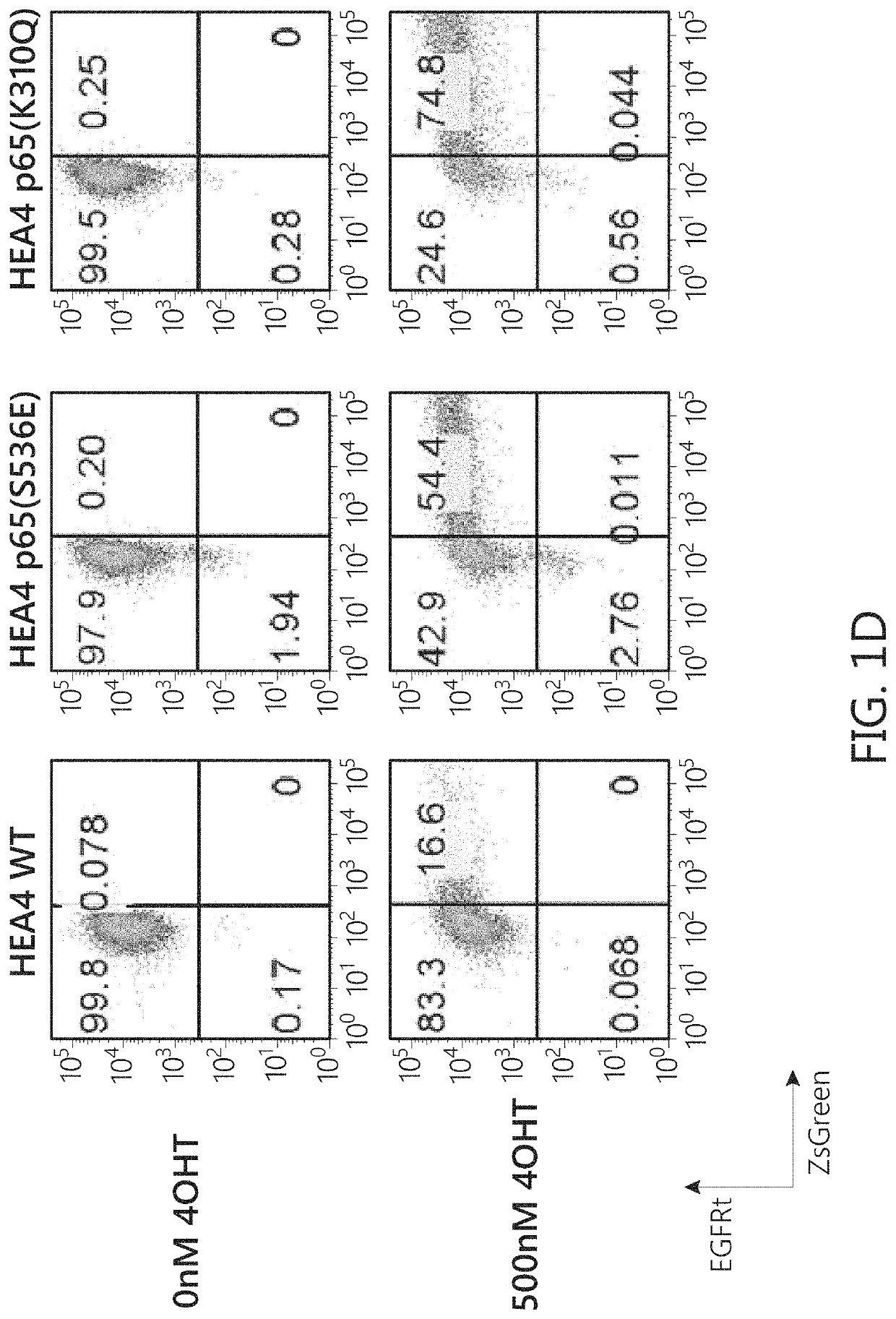Chimeric transcription factor variants with augmented sensitivity to drug ligand induction of transgene expression in mammalian cells
- Summary
- Abstract
- Description
- Claims
- Application Information
AI Technical Summary
Benefits of technology
Problems solved by technology
Method used
Image
Examples
Embodiment Construction
[0028]In the description that follows, the terms should be given their plain and ordinary meaning when read in light of the specification. One of skill in the art would understand the terms as used in view of the whole specification.
[0029]“About” has its plain and ordinary meaning when read in light of the specification, and may be used, for example, when referring to a measurable value and may be meant to encompass variations of ±20% or ±10%, more preferably ±5%, even more preferably ±1%, and still more preferably ±0.1% from the specified value.
[0030]“Antigen” or “Ag,” have their plain and ordinary meaning when read in light of the specification, and may include but is not limited to, for example, a molecule that provokes an immune response. This immune response can involve either antibody production, or the activation of specific immunologically-competent cells, or both. It is readily apparent that an antigen can be generated synthesized, produced recombinantly or can be derived f...
PUM
| Property | Measurement | Unit |
|---|---|---|
| concentration | aaaaa | aaaaa |
Abstract
Description
Claims
Application Information
 Login to View More
Login to View More - R&D
- Intellectual Property
- Life Sciences
- Materials
- Tech Scout
- Unparalleled Data Quality
- Higher Quality Content
- 60% Fewer Hallucinations
Browse by: Latest US Patents, China's latest patents, Technical Efficacy Thesaurus, Application Domain, Technology Topic, Popular Technical Reports.
© 2025 PatSnap. All rights reserved.Legal|Privacy policy|Modern Slavery Act Transparency Statement|Sitemap|About US| Contact US: help@patsnap.com



